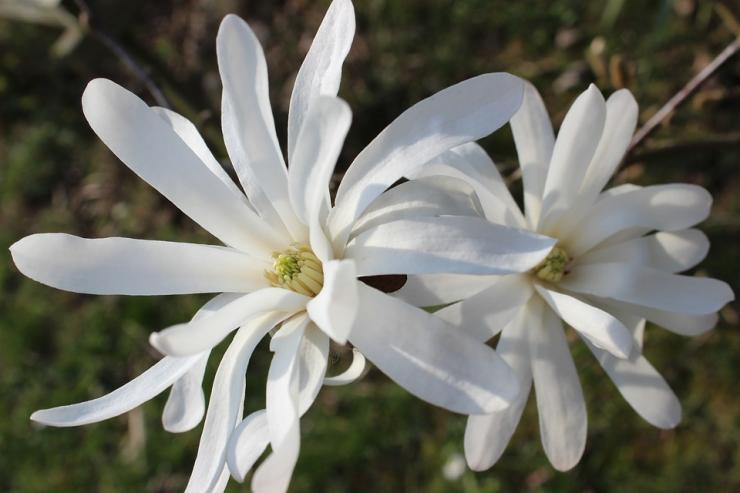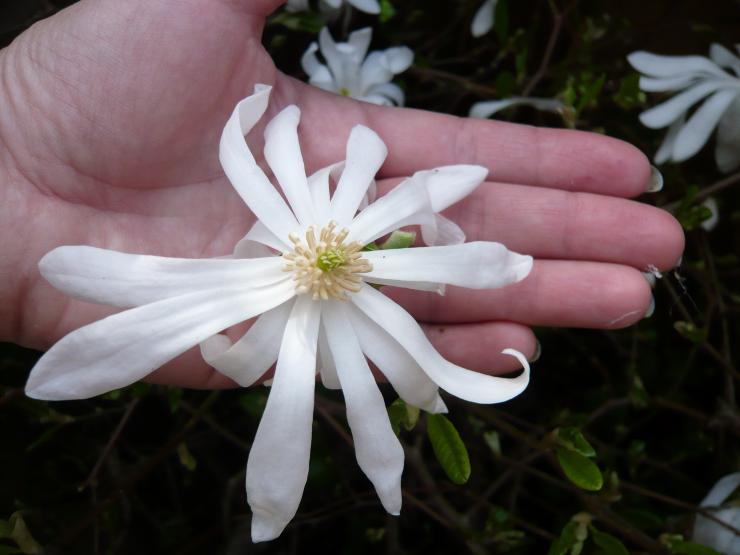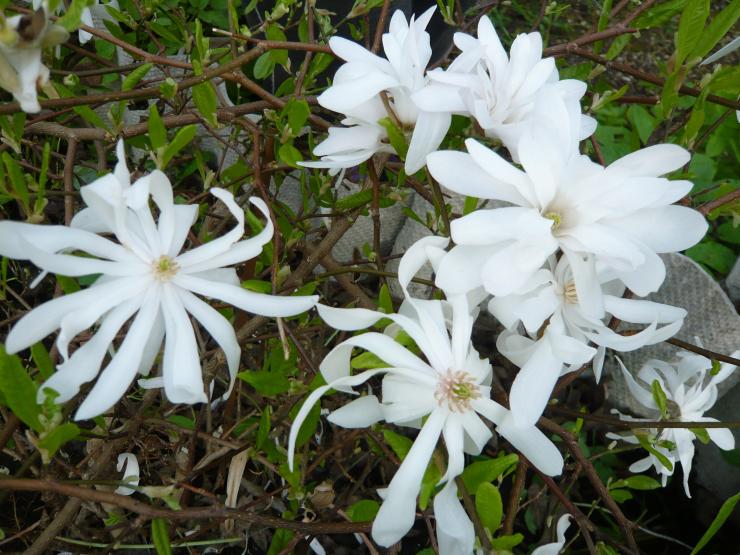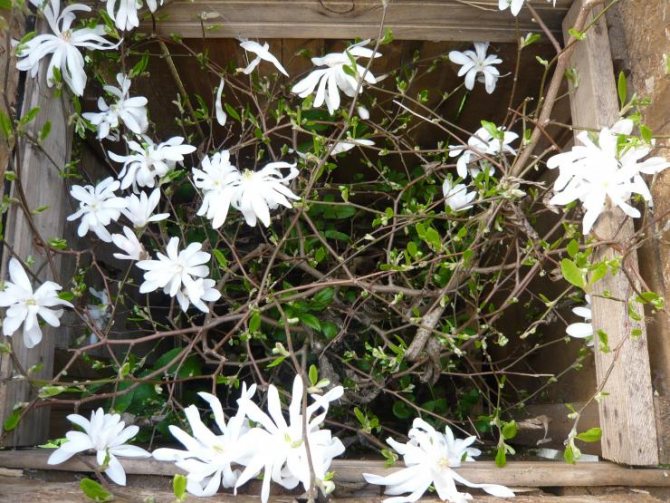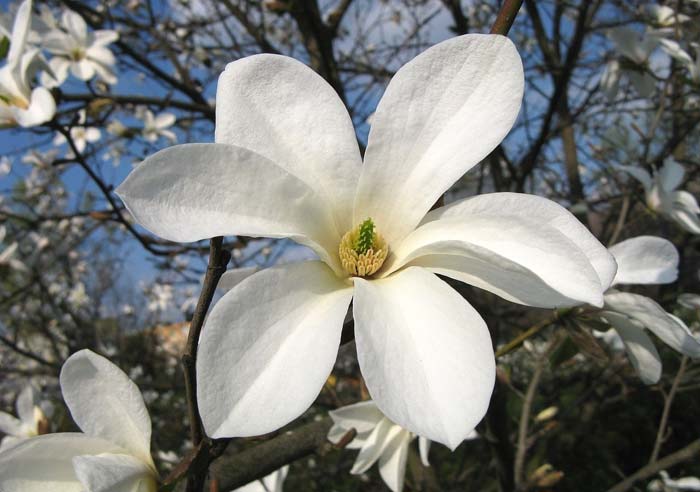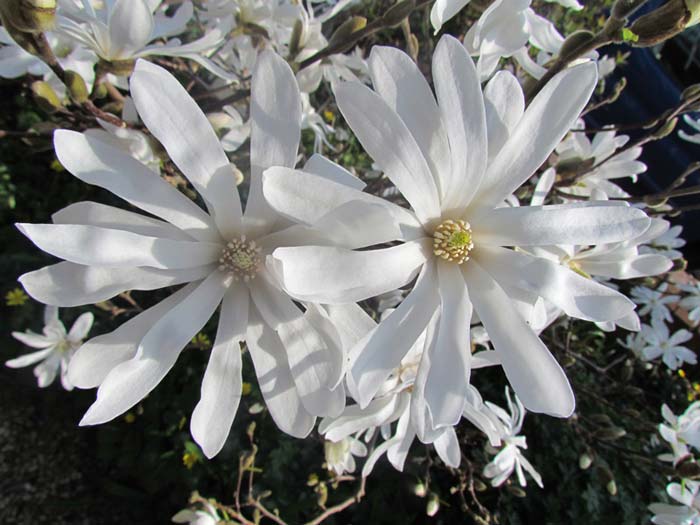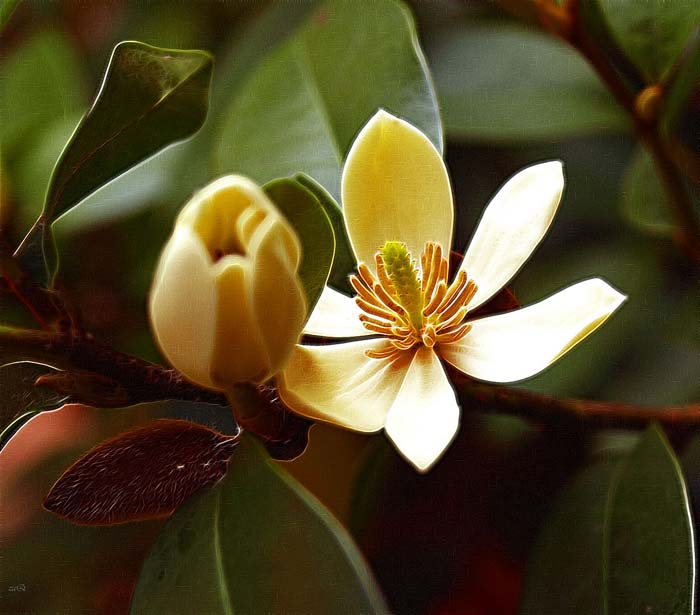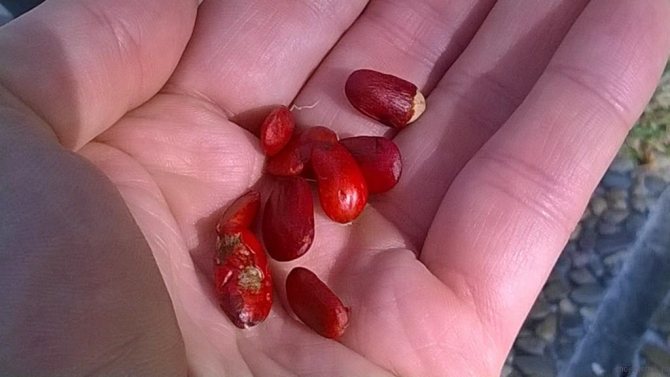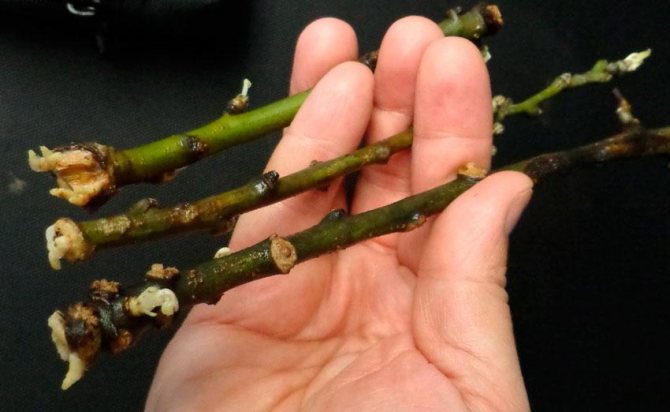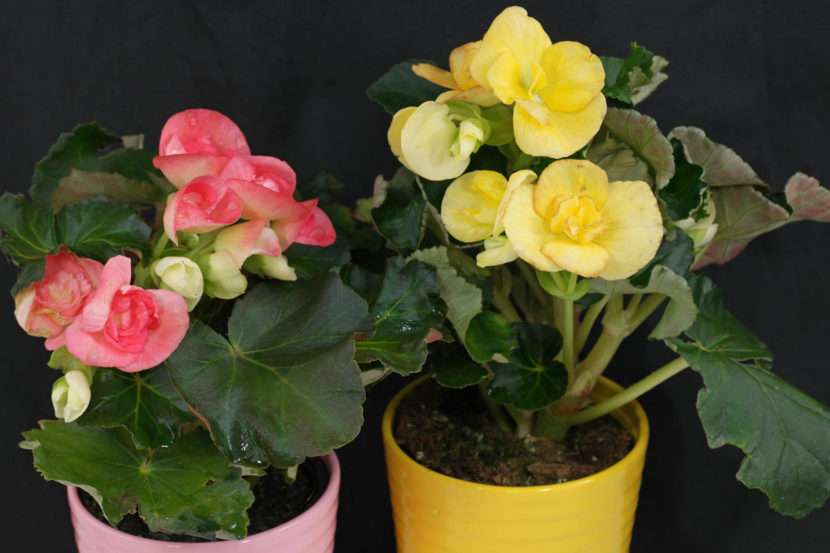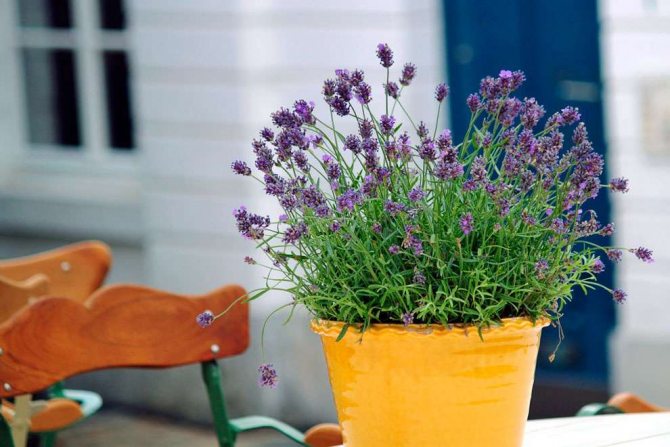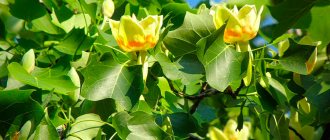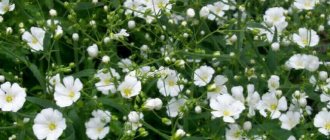Magnolia is a magnificent evergreen shrub that grows in the Crimea and the Caucasus. It blooms with beautiful white flowers and has an unforgettable scent. Magnolia is the oldest plant that lived on earth about 140 million years ago. The first trees found the era of dinosaurs on Earth. But now it is considered exotic, since the magnolia has a beautiful crown and spectacular fragrant flowers.
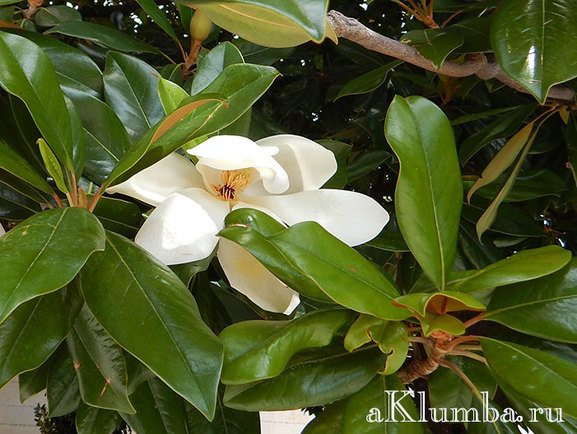
Magnolia: planting and care in the suburbs
Magnolias are one of the plant varieties that prevail in the subtropical continents. These plants are of two types - shrubs and trees, from two meters high. The leaves are elliptical. The flowers of plants are fragrant, of different colors, their color depends on the variety and variety. Inflorescences are located at the edge of the shoot or in the axils between the leaves. Magnolias are divided into two types - deciduous and evergreen.
One of the difficulties of growing a plant in the suburbs is freezing. The most acceptable variety for this region is the deciduous magnolia. It is more resistant to frost.
Before planting a magnolia, you need to inspect the seedling. Its root system must be well developed and closed. To grow a magnolia in the Moscow region, the following must be taken into account when planting:
- The best for him is humus fertile soil;
- the area on which the plant is planted must exclude drafts and wind;
- limed soils are detrimental to the root system, root development is suspended, and the plant may die;
- downed, moisture-saturated sandy soil will slow down the growth of the seedling.
A favorable site for planting magnolias in the Moscow region will be a moderately sunny place with suitable soil. You can plant seedlings in autumn and spring. It is recommended to plant a plant in autumn from the second half of October, when the air temperature is moderate (no heat and no frost). In the spring, planting begins in April, but it must be borne in mind that the slightest frost can cause great harm to a plant that has started to grow. In autumn, seedlings take root more often than in spring.
After determining the landing site, a pit is prepared. Here it is necessary to take into account that the size of the planting pit should be 3-4 times the volume of the roots of the seedling. Further, the soil taken out of the pit is mixed with compost. Dense soil is diluted with sand. Having prepared the necessary composition of the soil, the seedling is immersed in a pit for planting. The neck at the root should not sink into the ground. The root system is covered with prepared soil mixture to make a hole. The soil is slightly compacted and watered.
After absorbing water, the near-stem section is mulched with peat, bark of coniferous trees, and sand. Given the climate of the Moscow region, it is recommended to cover the first 2-3 years of wintering magnolia with burlap, non-woven material.
Description of magnolia
Magnolia is a shrub or deciduous tree that grows up to 20 m in height. Its stems are overgrown with brown bark, which is scaly or furrowed. The rather large green leaves are oval and slightly pubescent.
Single flowers exude a characteristic aroma, their size varies from 6 cm to 35 cm in diameter. Each individual specimen is formed by 6-12 petals of a red, white or pink hue.The flowering of magnolia depends on the variety, there are samples in which it falls at the very beginning of spring. Triangular seeds, after opening the leaflet, cling to it with threads. In addition to its high decorative qualities, especially in springtime, magnolia also exhibits medicinal properties.
Breeding methods for magnolias
Magnolia can be propagated by layering - the lower shoots are bent down and covered with soil. After a year, roots are formed. The shoot is carefully transplanted from an adult plant. This procedure is performed only in the spring.
The plant propagates by cuttings (vegetatively). This method is effective if you have a greenhouse. Reproduction takes place in June, during a period of active growth. Cuttings are cut from semi-lignified plants, a few leaves remain in the upper side, the lower one is impregnated with a substance for good root formation. Then they are planted in a specially prepared substrate based on sand, peat or perlite. For the cuttings to take root, the temperature should be 19-20 ° C and the soil should be moderately moist. Rooting occurs after 2 months, but the seedlings must be planted in an open space no earlier than a year later.
Necessary care
The watering regime is important. Magnolia is especially undemanding to care for. But in order to grow a healthy plant that will delight the eye with its flowering, it is recommended to follow some rules. Given the origin of the plant, in order to grow magnolia in the Moscow region, it is necessary to monitor the moisture content of the ground cover (especially in the first years of growth).
The soil should always be moderately moist; in the heat, drying of the soil is unacceptable. Not only watering will help maintain moisture, but also covering the root space with foliage or bark of other trees - mulching. This procedure warms the roots, enriches the soil with useful components, and minimizes drying out.
The crucial moment is shelter for the winter. Magnolia is acceptable for the regions of the Moscow region (star, kobus and other hybrids), frost-resistant, but shelter will not interfere with it. Even the smallest frost can cause trouble for plants. To prevent frost damage, the trunk is wrapped in a thick cloth folded in two.
A new touch in landscape design - growing magnolia in the garden
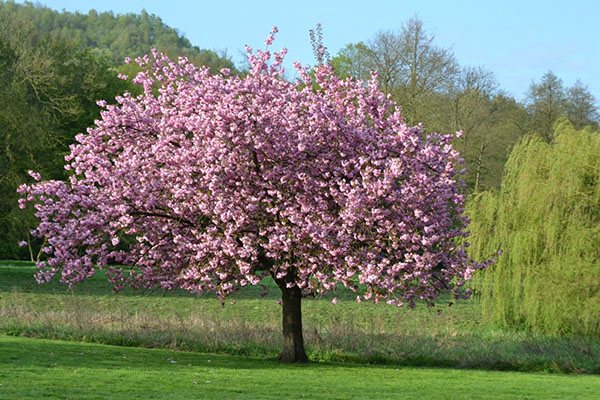

You don't have to live by the sea to enjoy the beauty of this amazing plant. Growing magnolias in the garden is quite possible. Saplings of different varieties successfully take root in many regions, grow in partial shade and are able to endure winter cold without loss.
The scent of this flower has a beneficial effect on the nervous system, soothes and relieves stress.
But if you stay too long where magnolias grow, your head can hurt. The aroma of this plant is used by world perfume brands (Kenzo, Yves Rocher, Aqua di Parma).
Description and types
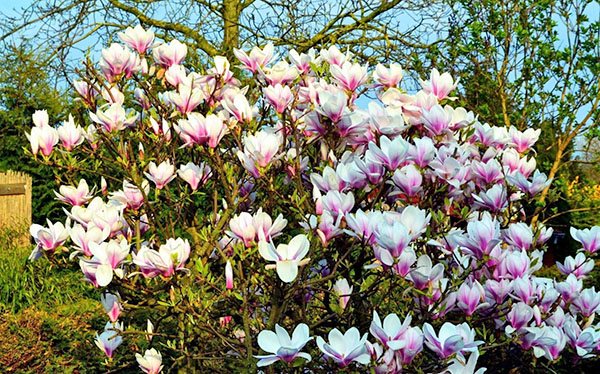

The name magnolia refers to deciduous or evergreen ornamental trees (less commonly shrubs). Their height reaches 4 - 6 m (in some species up to 10 - 12 m). The bark is ashy or brown, smooth to the touch, with scales or grooves. Widespread due to unusually beautiful large flowers with a pleasant aroma. They can be white, yellow, cream, purple. From 6 to 12 petals can form on one flower. The care and cultivation of magnolia is not difficult, and its flowering is a truly mesmerizing sight.
Species diversity and frost resistance
The most resistant varieties: Kobus, Siebold, large-leaved, large-flowered, willow, Lebner.
Less resistant varieties: umbellate, white, nude, Sulange, lily.
In Siberia, you can also plant and care for magnolia. In this case, varieties are selected that can withstand the cold well.
Description
The height of the tree is about 20 meters, and some specimens reach 30 meters.The crown is wide, pyramidal or spherical. The leaves are petiolate, thick, dense, similar to ficus leaves.
The flowers are large or very large, their diameter reaches 20 cm. They are placed on the tops of the branches one by one. Color - white, cream, pink, red, purple, lilac.
In our latitudes, only a few of the 120 available varieties grow, which include large-flowered magnolia. Growing it at home is a rather troublesome business, but affordable for enthusiasts.
Growing magnolias in a garden from seeds
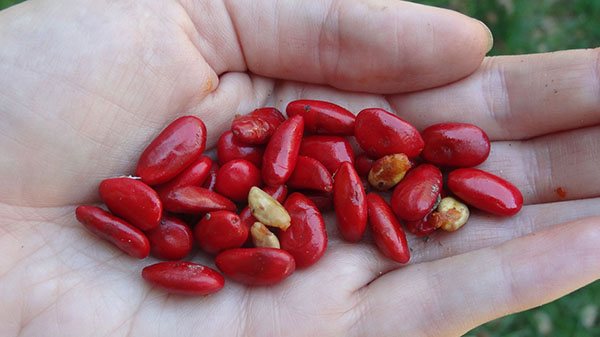

To date, it is not a problem to acquire the seed of this culture. For cultivation in the suburbs, they most often buy Siebold's magnolia. As a rule, the grains are covered with a protective shell (sarcotesta). Beneath it there will be another layer in the form of a white oily substance. It protects seeds from early germination. All these shells must be removed before planting. Rinse the seeds themselves well with clean running water. The next step is to subject it to cold hardening (stratification).
Some gardeners sow frost-hardy magnolia seeds in the fall directly into open soil, covering them with leaves.
Wrap the grains in slightly moistened moss and leave them in the refrigerator on the bottom shelf for about 3-5 months. The most suitable temperature is 0 °. If it is lower, seeds and seedlings may die. Check the material once a week. As soon as the grains germinate, plant in containers. Take a sufficiently deep pot (about 40 cm), fill it with fertile soil with peat.
Growing magnolias in the garden requires soil monitoring. Souring of the soil is unacceptable, it must be well-drained to allow air to pass to the roots. Lay out the bottom of the pot with a 10 cm layer of expanded clay drainage. Soak germinated seeds in a stimulant solution (as indicated in the instructions). Bury each grain about 2 cm in moist soil. Place the container in a warm place with plenty of bright, diffused light. If the air is very dry, take care of the greenhouse. After the emergence of seedlings, the conditions of detention remain the same. When two pairs of leaves are formed, water with a weakly concentrated solution of fertilizer for seedlings.
Planting magnolias is best done in the fall, when young seedlings stop growing. Depending on the region, sometime in early or mid-October. That is, when there is no frost yet, but it is no longer hot outside.
Interesting facts about magnolia
Blooming magnolia in southern cities has become a real treat. Not only locals come to admire the ancient exotic flowers, but also guests from colder regions come.
There are legends about magnolia and there are various facts, for example:
- about 40 plant species are listed in the Red Book as endangered;
- in the 50s of the last century, hybrids were bred, which were named by female names;
- an exquisite plant bloomed on Earth even before the appearance of bees;
- magnolia is a poisonous plant;
- in the old days, the leaves of the plant were eaten only by the emperor of China, as a delicacy;
- the flower that appeared for the first time in Europe amazed the audience so much that all the ladies wanted to have it. A real flower fever began, gardeners stole flowers from each other and sold them at the price of a diamond jewelry;
- a graceful flower is given to the beloved with the promise of eternal love;
- a girl who sees the flowering of magnolia can count on an early marriage.
Magnolia flowers are not cut not only because of their intoxicating aroma, but also according to the belief that the one who picks off petals and branches will be punished in the form of misfortune. A flowering tree in the yard brings prosperity and wealth to the inhabitants of the house.
Hardening and fit
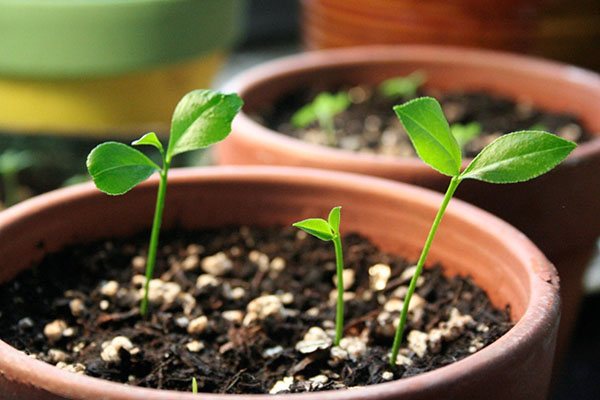

When the spring frosts pass, the pots can be put outside in partial shade. At night, it is still necessary to bring them into the room. As soon as a stable, even positive temperature is established at night, containers with magnolia can no longer be brought in, but, for example, dug in the garden.
Seedlings - first years should winter indoors. You can store them in the cellar. The main thing is that they do not freeze. For the next year, the conditions of detention will remain the same.
In the spring, take out the magnolia seedling into the garden, water it regularly and apply fertilizing from mineral fertilizers. But in the third year, you can safely transplant your magnolia into open ground. Firstly, it has already passed the hardening period. Secondly, when transplanting on the roots, it is imperative to preserve an earthen lump. Thus, the plant will experience less stress and the roots will be protected from damage. But before you plant a magnolia, you need to choose the right site. The place should be sunny, protected from northerly and easterly winds. In the south, where the sun is especially hot, partial shade is acceptable.
Cuttings are also used to propagate magnolias. They are cut from young specimens towards the end of July. At the top, 2 - 3 leaves must be left, and the cut is treated with a root formation stimulator.
The cutting is planted in a container with sand, covered and kept at a temperature of 19 - 22 degrees for 5 to 8 weeks. Cuttings are planted in open ground no earlier than a year later. If you decide to place it right away in the garden, take care of a good shelter.
Magnolia tree is a miracle
flowers look like a butterfly
First of all, because blooms incredibly beautiful bright big flowers similar to exotic butterflies... At that moment, when many plants have not yet had time to release leaves, the beauty already pleases those around her with her flowering.
She begins to release the first flowers in April, and they fill gardens and parks with their vanilla aroma.
It prefers to grow in the southern regions, where a warm climate prevails. Magnolia flower, which is endowed with the brightest colors, does not allow all tourists to look away from themselves.
Some people who dream of seeing how it blooms go on vacation not in the warm summer, but in the middle of spring, when it is still quite cool and the sun is just beginning to warm everything around.
Legends and myths
It was brought to the territory of Europe from mysterious China.
According to one of the Chinese legends, the beautiful flowers blooming on the tree are young beauties who once lived in the same village. When it was destroyed by enemies, and only one girl managed to escape death. It was she who asked the mother earth so that the dead girls could live on.
In the morning, when the invaders saw a tree that suddenly appeared, they decided to get rid of it. Having cut it down, they split it into the smallest chips and scattered it around the neighborhood, only in those places where the chips fell, young sprouts appeared, which were called magnolias.
If you dream of seeing this amazing flower, then this can be done not only in the southern regions and warm countries, because the growing magnolia in Belarus also produces beautiful flowers.
For this, you just need to visit the Minsk Botanical Garden, where the first garden of these beautiful trees was laid a couple of years ago.
What you need to know about magnolia
In the presented family, there are about 70 varieties of plants. The shape of the crown can be either spherical or wide pyramidal. Depending on the height, the height of the tree also changes. Some of the representatives can grow up to 20 meters, but generally their height varies from 5 to 8 meters.
- On the shoots, you can see pronounced scars that remain from the foliage, as well as traces of stipules, expressed in narrow ring-shaped scars.
- Entire, leathery leaves of an obovate or elliptical shape are slightly pubescent on the back. Colored emerald green with feathery veins.
- The circumference of the flowers varies from 6 to 35 cm. There are white, pale cream, pinkish, red-scarlet, lilac or burgundy-purple flowers, consisting of 8-12 petals, which are superimposed on each other.
- Magnolia produces its first buds early in spring or early summer, depending on the variety. Not only the flowers delight with their sweet aroma, but the buds also allow you to enjoy a light delicate scent.
- After flowering ends, you can see the unusual cone-shaped fruits that adorn the branches from late August until winter.
At least once, having seen this, you will surely want a charming woman to grow in your garden. It looks great both in a single planting and next to coniferous evergreen bushes.
How is flowering
After planting, if conditions for growth and development are favorable, most trees begin to bloom only after about 8-10 years.
A variety of colors and flavors will allow you to choose the most suitable variety for you. Some of the representatives release buds only after the leaves appear on them, while others first release and dissolve their gorgeous buds, and only then the leaves open on the branches.
But no matter which of the varieties you choose, planting this beauty in your garden, you will become the owner of a unique plant.
After flowering has ended, petals begin to fall off from each flower, which slowly descend to the ground. "Magnolia rain" is what gardeners call this process.
But even this beauty has its drawbacks. You don't need to sleep near her! The fact is that the aroma emanating from flowers is often very strong and if you inhale it for a long time, then a headache may soon appear.
Soil and watering
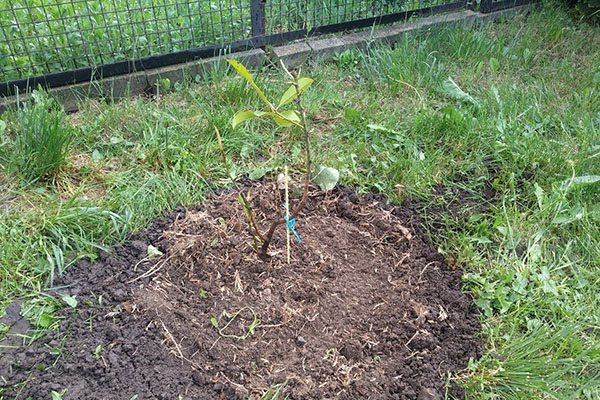

Magnolia soil should be light, slightly acidic, fertile. Also, a prerequisite for the ground is that it must pass air well. In addition, moisture in the area should not stagnate. Heavy, long-drying soil, not the best option for growing magnolias in the garden. The pit should be about three times the size of the root system in volume. Pour rubble and broken branches to the bottom as drainage. Lay out fertile soil on top (you can mix it with rotted manure and small coniferous bark).
Planting and caring for magnolia in the suburbs is no different from other regions. The main thing is to protect the roots.
Therefore, it is not recommended to compact the top layer of the earth. Be sure to mulch with coniferous bark. This will make it easier to maintain the necessary moisture and acidity of the soil. If new leaves and shoots appear, then everything is done correctly, and the plant has taken root.
Water the magnolia with warm, soft water regularly during hot weather. Avoid drying out or waterlogging the earth.
Top dressing and other secrets
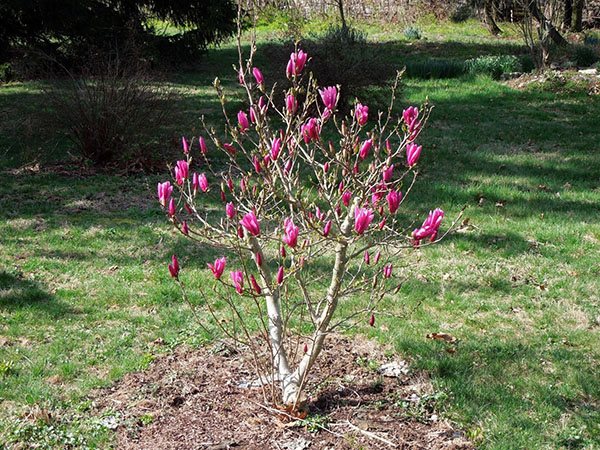

You can achieve lush flowering from a plant if you follow certain rules:
- Fertilizers are needed for stable growth and beautiful flowering. The first feeding of magnolias is carried out in the spring. In order for the plant to bloom beautifully, it is better to add mineral compositions with a high nitrogen content to the soil (excellent growth stimulation). When buds are tied and during flowering, it is better to use special complexes designed for flowering plants. Dosages are calculated strictly according to the instructions. July is the time of the last feeding. From the end of August, magnolias gradually enter a dormant period and prepare for wintering. Any stimulation of growth at this time is contraindicated.
- The bottom of the trunk and roots must be covered for the winter. To do this, use a special cloth, straw or spruce branches.
- Care must be taken with transplants. The superficial root system is very easy to damage. Therefore, if you can see that the tree is good in the selected area, you do not need to transfer it anywhere.
- The crop is believed to be disease and pest resistant. But for prevention, it is still worth periodically treating with special biological products.
- Planting and caring for magnolia outdoors includes pruning.But this should be done only when necessary: for example, if there are branches crossed inside the crown. They need to be cut. This procedure will improve growth and decorativeness. Remove dry branches and frozen buds after flowering. All sections must be processed with garden pitch. Cut magnolias shrubs to give them a compact and beautiful shape.
Feel free to experiment. Create favorable conditions in your garden and you will definitely make friends with this exotic beauty.
Growing magnolia in the middle lane - video
Growing magnolia in the garden
Surely many people at least once had to stop in the spring in front of someone's yard or garden, involuntarily admiring an unusual picture - luxurious pink, white or purple flowers on a beautiful and delicate tree without leaves. This is a magnolia in bloom. At first glance, it may seem that such a miracle can only be nurtured by experienced gardeners, investing a lot of money and putting in a lot of effort. Let's try to figure out if this is so by talking about how to grow a magnolia.
Magnolia - deciduous or evergreen ornamental tree and shrub from 2 to 30 m in height with beautiful large flowers up to 25 cm in diameter, which are located one at the ends of the branches.
This is a very ancient plant. It is believed that it is the progenitor of modern flowering plants. This tree is popular in China, where there are many beliefs about it.
Types and varieties of magnolia
Magnolia has become widespread in the world due to its aesthetic appearance and large varietal variety. Some of the largest collections are located in the United Kingdom and in the capital of Ukraine.
| Views | Description, varieties |
| Siebold | Often, this magnolia is represented by a shrub, rarely - a tree, reaching 10 m in height. The leaves are in the shape of a shortened oval, growing up to 15 cm longitudinally. Reminiscent of a bowl, the flower is located on a weak peduncle, reaching 10 cm in diameter. A winter-hardy specimen is able to withstand ambient temperatures down to -36 ° C, but for a very short time. Siebold has been divorced since the second half of the 19th century. |
| Obovate or white-colored | A deciduous tree, native to one of the Kuril Islands, reaches a height of 15 m. The stems are covered with gray bark, smooth in texture, and end with 8-10 leaves. The flowers are large (about 16 cm in diameter), presented in cream shades, exude a strong aroma. The plant safely tolerates cold and shade, but is capricious to the level of moisture and soil composition. It has been cultivated since the second half of the 19th century. |
| Medicinal | A shrub with large leaves, strong-smelling flowers, which are pointed at the top. This plant comes from China, where it was widely used in the medical field. In the middle lane, it practically does not occur. |
| Pointed or cucumber | The deciduous tree originated in North America and has spread to the larch and rocky areas of the continent. This species can grow up to 30 m in height. Young plants have a pyramid-shaped crown, and mature ones - rounded. The foliage is slightly pubescent, on the shady side it is presented more with a grayish tint, while the front is dark green. Small flowers (up to 8 cm) are bell-shaped. Formed by yellow petals with an admixture of green. The resistance of the species to cold weather is the greatest among all others. In America, on the basis of this species, the Brooklyn magnolia was bred. |
| Star-shaped | It is notable for its decorative qualities, in particular the shape of the flowers formed by oblong white petals, resembling a star in appearance. The plant is small - about 2.5 m. The stems are brown. The most common varieties and hybrids:
Susan has a deep red hue with a paler middle. |
| Lily | One of the most widespread species has been cultivated since the end of the 18th century. This popularity is explained by the saturation of the flowering and the light exuded aroma. The flowers are similar to a lily, but their size reaches 11 cm.On the outside they are purple in color, and on the inside - white. The variety Nigra deserves a special mention; its outer surface is ruby-colored. |
| Cobus | A deciduous tree grows up to 25 m in natural conditions, but the height of the cultivated specimen does not exceed 10 m. The top of the leaf has a pointed shape. The surface of the plate is bright green, and its shadow side is less saturated. Fragrant white flowers reach 10 cm in diameter. For the first time, Kobus will bloom only at the age of 9 to 12 years. Refers to frost-resistant species. |
| Large-flowered | The young plant shows slow growth rates and weak frost resistance, however, the large size of the flowers (up to 25 cm in diameter) and the pleasant smell exuding from them compensate for the disadvantages. The plant adapts well to urban conditions, resistant to insect attacks and various ailments. The fruit is shaped like a bump. The most common forms are:
Gallison (cold resistant). |
| Soulange | There are several dozen forms of this plant that have spread throughout the world. This species does not grow above 5 m in height, and its leaves reach about 15 cm in length. The size of the flowers covers the range from 15 cm to 25 cm, sometimes their aroma is practically absent. They are presented in a wide color palette: purple, pink, white. Moreover, the latter is an exceptional case. The plant is not considered whimsical. |


Magnolia: choosing a place to plant
Before you take care of growing magnolia in your garden and caring for it, you need to choose the right type, variety and place for planting. Since the main problem with the magnolia tree is poor frost tolerance, when choosing a plant type, you need to pay attention to how cold winters are in your area, and which type is right for your climatic conditions. The most frost-resistant are the Kobus and Lebner magnolias. The magnolias of Soulange, Wilson, Ash tolerate the harsh winters relatively well.
When choosing a place for planting, it must be borne in mind that this plant does not tolerate drafts well, therefore, the site should, if possible, be sheltered from the wind from the north and east, for example, by taller trees.
You need to take care of sufficient illumination of the place so that the tree is not located in deep shadow. Also, the plant should not be exposed to direct sunlight. Exceptions can be for Lebner's magnolias, Kobus and stellate, which can grow in open areas. The cobus is also resistant to exhaust gases and industrial emissions, which allows it to be dropped off near busy highways and in industrial areas.
Today magnolia is often used in landscape gardening, so many recommendations have been written on how to grow a flower-tree with your own hands, the main of which we share with you.
"Star fever"
Inspired by the first successes, I dared to buy the next magnolia in the garden center. It was M. stellata.A twig sapling, which moved from a pot to a semi-shady corner of the site, grew slowly, but in 8 years it turned into an elegant tree about one and a half meters in height. And most importantly, it blooms almost every year (perhaps, except for only those years when even cherries and apple trees freeze slightly). And considering that the snow-white flowers appear in early May even before the leaves bloom and the size of each "star" is about 12 cm, this is stunningly beautiful!
I wanted to experiment more and more. Studying the literature, I found out that there are a lot of hybrids with the "blood" of m. Stellate, which are widespread in European gardens and are also distinguished by good winter hardiness. For example, a hybrid of M. kobus and starred one, M. Lebner, which has already received its own name. She has a lot of varieties, and their flowers can be both white and pink. One of them - 'Wildcat' - with white double flowers, similar to roses, I now also have, but so far for the first time wintered. And it seems to be successful!
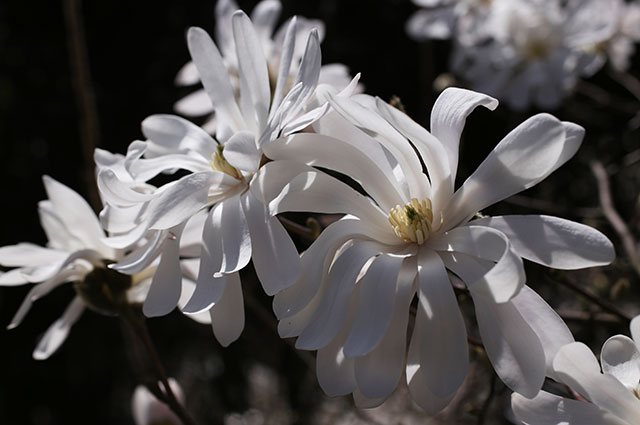

M. star ‘Royal Star’. Photo: From personal archive / Elena Lebedeva
Of the other hybrids in this group, I have been growing a 'Pinky' magnolia for several years now. Powerful, winters well, and its light pink flowers with wide petals reach the size of a large saucer. I never tire of being amazed at her! And my guests are simply speechless.
Tip number 2
Magnolia is stellate and hybrids with its participation reproduce well by cuttings, so it is not too difficult to find their seedlings in garden centers. The trees are generally compact and suitable for small gardens. According to personal experience and feedback from gardeners, the following varieties have taken root well in the Moscow region: m. Star 'Rosea', 'Royal Star', m. Lebner 'Leonard Messell', 'Merrill', m. Hybrid 'Pinky', 'Susan' and others ...
How to plant a magnolia
Magnolia is not very whimsical, however, when planting and caring for it, you must follow some simple rules, which, first of all, relate to the composition of the soil, watering and feeding.
Soil composition
Magnolia seedlings are best purchased from well-established specialty stores. They are usually sold in containers there. Such plants tolerate well both spring and autumn planting, since they are planted with a clod of earth to which they have already adapted. Experienced gardeners recommend purchasing 1 m tall plants with a pair of flowers already in full bloom.
This way you will know for sure that your local climate is right for this type of magnolia.
The soil for planting should be light, well-drained and moderately moist. A neutral or slightly acidic soil rich in organic matter is perfect.
If the soil in your area is limed, then peat can be added to it, which will increase the acidity.
Optimal soil composition:
- deciduous or sod land - 1;
- peat - 2;
- sand - 0.5.
Magnolia planting scheme
The planting hole should be prepared in advance, 3-5 times the size of the tree's root system. Drainage is poured at the bottom of the pit - 15 cm high.Then a layer of sand (10 cm), a layer of manure (15 cm), again a layer of sand (15 cm) and a prepared soil mixture are laid. After that, the seedling is placed in a hole and covered with earth, while making sure that the root collar is not buried. The maximum recommended depth is 2.5 cm. The soil should be lightly tamped and watered abundantly. The near-trunk area can be covered with coniferous bark, which will keep the desired moisture level.
Magnolia does not tolerate transplants, so it must be immediately planted in a permanent place. If you plan to plant several trees, then the distance between them should be at least 4-5 m.
Golden dreams
Another large group of magnolias that showed themselves well in Central Russia and, of course, did not pass me by - varieties created on the basis of M. acuminata. Their winter hardiness is usually excellent, and the flowers of many of them are colored in a yellow or creamy yellow color, which is rare for magnolias.
Since there is no more room for a large tree, 'Sun Spire' has settled in my garden - this variety is famous for its narrow, almost columnar crown. Now the height of the tree is about 2.5 m, and the width is only about 60 cm. The flowers are not too large (about 12 cm), but of an unusual yellow-orange hue.
Council number 3
Yellow-flowered magnolias are a very promising and reliable group for gardens in central Russia. Planting one of the varieties - ‘Elizabeth’, ‘Yellow Bird’, ‘Sanction’, ‘Sun Spire’, ‘Yellow River’, you won’t go wrong: they have already been tested by our amateurs. By the way, before buying, do not forget to find out not only the future dimensions of the tree of the variety you have chosen, but also the period of its flowering - before or after the leaves bloom.
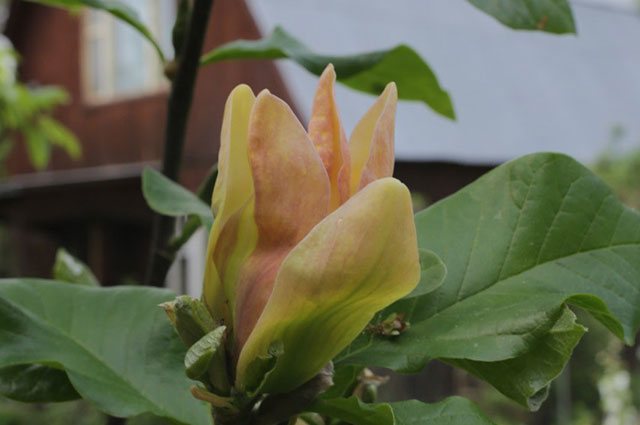

M. ‘Sun Spire’. Photo: From personal archive / Elena Lebedeva
Magnolia care features
Once a magnolia is properly planted, its well-being will depend on caring for it. In this case, there are no fundamental differences from caring for ordinary fruit trees.
Watering the plant
Watering is necessary only for young plants, and during dry periods, for adults. For the well-being of the tree, it needs watering once a week in the amount of 2-3 buckets of water. If the summer is too dry or the magnolia grows in sandy soil, then the regularity and abundance of watering can be increased.
Soil care
The roots of magnolias are shallow, so the ground in the root area must be loosened to a depth of 20 cm, and this should be done with caution, preferably without using a shovel or rake. It is better to pull out weeds by hand. After the tree reaches 3 years, the trunk circle can be mulched with organic materials (pine bark, peat, sawdust, manure).
This will insulate the soil and serve as an additional source of nutrients. After this procedure, the soil can no longer be loosened.
When and how to fertilize magnolia
You need to feed and fertilize the tree no earlier than 2 years after planting. In early spring, you can feed your beauty with a mixture of 1 kg of mullein, 15 g of urea, 25 g of ammonium nitrate. At the beginning of autumn, fertilizing with nitroammophos (20 g / 10 l of water) is useful. The watering rate is 40 liters per tree.
You can use the fertilizer "Kemira-Universal" (1 tablespoon / 10 l of water), as well as special fertilizers "For Magnolia".
Plant pruning
Since magnolias do not tolerate pruning well, this procedure is necessary only for decorative purposes in the first years after planting to give the desired shape to the crown. It is contraindicated to get carried away with this process, as this can provoke less active flowering. In the future, only sanitary pruning is recommended once a year, in which dry, curved, damaged branches are removed. If the crown is thickened, then it is thinned out. In order for the sections to heal quickly, they must be covered with garden pitch.
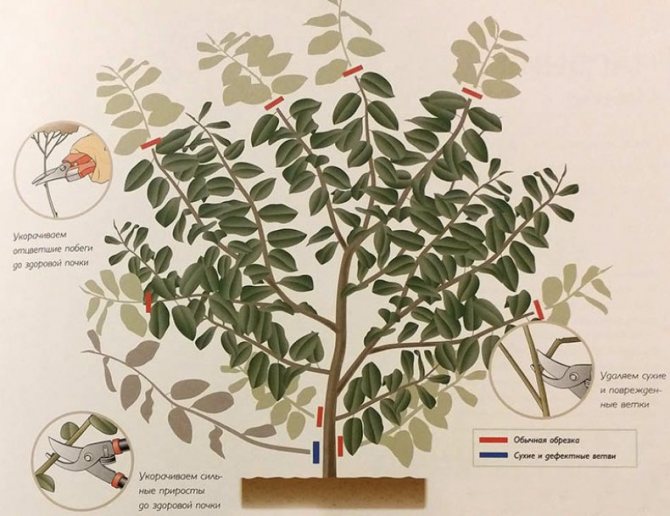

Why magnolia doesn't bloom long after planting
- Freezing.
The formation of buds, the flowering of which begins the next year, takes place in late summer and early autumn. This means that if the buds freeze, then flowering will not begin.
- Growing from seeds.
You can become the owner of a flowering plant only a few years after planting. The first flowering comes from which variety you have chosen. It is worth choosing seedlings that have been propagated by grafting. They begin to bloom 2-4 years after planting. In the event that the bush has grown, but flowering has not begun, this means that you have purchased a tree grown from seeds. Such a copy will delight you with its flowers after 10 years.
- Improper care.
Prefers to grow in areas protected from the winds. It is also necessary to apply fertilizers in a timely manner, which will help the buds to set. Abundant watering is equally important for active growth and development.Dry autumn can cause insufficient moisture to the kidneys.
Magnolia: how to keep a plant in winter
Mature trees tolerate temperatures down to -25-30 ° C in winter. Therefore, the question of how to preserve mature magnolia in winter is no longer in front of its owner. But you need to worry about young plants. In the first 3 years, their lower part of the trunk and root system (or even completely a tree) must be insulated with a special agrotechnical cloth (lutrasil), burlap, straw or spruce branches. With age, the frost resistance of magnolias increases.
In subsequent years, the land in the near-trunk circle in the fall needs to be mulched with sawdust, pine bark, and peat.
Magnolia breeding methods
Magnolias reproduce in three ways:
- seeds,
- layering and cuttings,
- vaccinations.
In nature, magnolias are propagated by seeds carried by birds. You can also try sowing the tree from seed. This should be done in the fall, immediately after picking the berries. Or put it off until spring, but keep the seeds in the refrigerator in a plastic bag.
First, the seeds must be poured with water for 3 days, and then cleaned from a dense oily shell (for example, by rubbing through a sieve). After cleaning, they should be washed in a mild soapy solution and rinsed in clean water several times. Sow in boxes to a depth of 3 cm in universal soil. Place the containers in the cellar until spring. In early March, they need to be moved to the windowsill before shoots appear. You can plant seedlings in a year. So you will have a magnolia grown by your own hands, by the birth of which you will already well know how to care for it.
With the vegetative propagation method (layering and cuttings) magnolias enter the flowering phase earlier than seed ones. This method gives the best results in the early years of the tree's life.
When propagating by layers in the spring, you need to bend and sprinkle one of the lower branches with earth. After a year or two, roots should form on it. After that, the layers are carefully separated from the mother tree and transplanted for growing.
At the end of July, you can try cuttings. Cuttings are taken from young trees, leaving 2-3 leaves in the upper part. The lower part is treated with any rooting agent. Then they are planted in a greenhouse, in a container with sand, covered with a lid and maintained at a temperature of + 19-22 ° C and the required humidity. Rooting should take place in 5-8 weeks. Cuttings are planted in open ground after a year. If the cuttings were carried out directly into the ground, then they need to provide good shelter so that they can withstand the cold.
Evergreen large-flowered magnolia. Growing
The gorgeous, absolutely evergreen large-flowered magnolia (magnolia grandiflora) becomes relevant for the south of the Middle Belt. From a distance, it looks like a rhododendron or ficus, but with huge white flowers. Suitable for experienced gardeners who are not afraid to grow evergreen subtropical crops in cold climates.
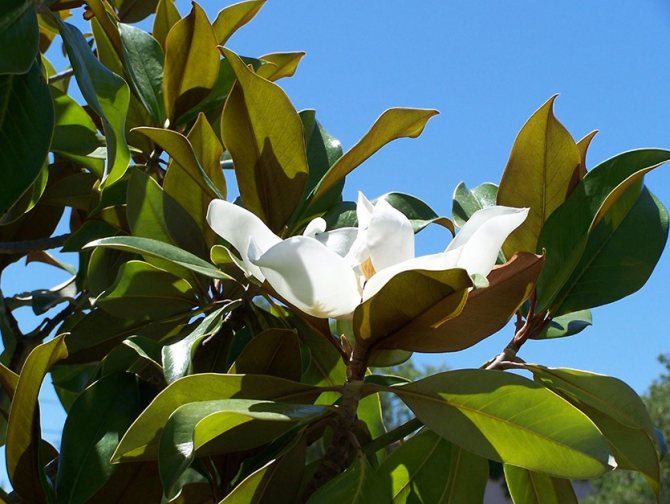

Chupacabra Viranesque /
Description... Magnolia grandiflora, or grandiflora (Magnolia grandiflora) is an evergreen tree up to 30 m tall in the tropics (trunk up to 1.4 m thick), up to 20 m in the subtropics, and up to 5 m in the Middle lane. Wide-pyramidal crown with dense foliage that sticks out in all directions. Leaves broadly lanceolate, dense, thick, smooth, shiny, dark green above, yellow-brown below, less often light green and slightly pubescent. Leaf length up to 25 cm, width up to 12 cm. Milky-white cupped flowers at the ends of the shoots sit singly, reach 25 cm in diameter! There are 6-12 petals, large, up to 5 cm wide. The central flower column is violet-purple with yellow stamens, among which bees often burrow, despite the fact that the pollination of magnolias is arranged for beetles even before the petals bloom. It blooms from May to October, sometimes to November, with a strong indescribable aroma.Moreover, on the sunny south side of the tree, flowers bloom first. The flowers of this magnolia are found in fossils from the Jurassic period, making it one of the oldest plant species on Earth. Fruits in October with a reddish-brown "cone" up to 10 cm long with protruding cherry-red seeds, which looks very decorative. The red color of the seeds is given by an external elastic shell - sarcotesta, which protects the seeds from drying out. The seeds themselves are black. Magnolia is a poisonous plant.
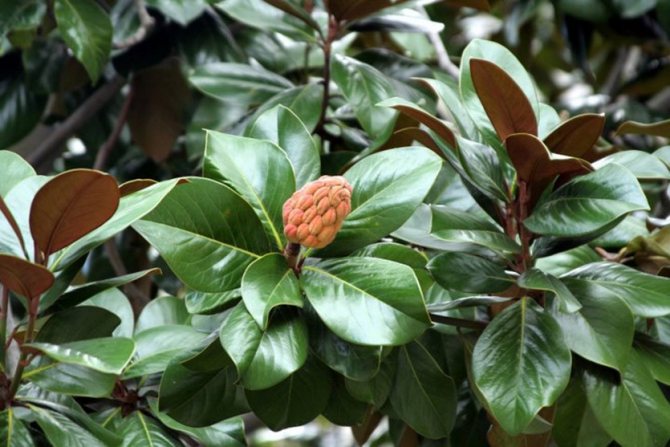

Bri Weldon /
Growing conditions, planting and care. In nature, Grandiflora is found with various oaks, magnolias, elm, nissa and amber. It develops best on fertile wet floodplain soils with a pH of 6, on warm southern slopes with full lighting. For growing grandiflora in the Middle Lane, it is better to take seedlings grown from the seeds of acclimatized plants in the southern regions of Russia and Ukraine, because Western European seedlings are more thermophilic. Polish seedlings will take root well. They (not even the most winter-hardy variety "Alba") in a place protected from the wind with good lighting and a thick layer of mulch can withstand frosts of -23 ° C without damage even in the south of Belarus. And the most winter-hardy varieties "Victoria" and "Edith bogue" keep the frost -25 ° С. Of course, all this is short-lived with a significant increase in temperature during the day.
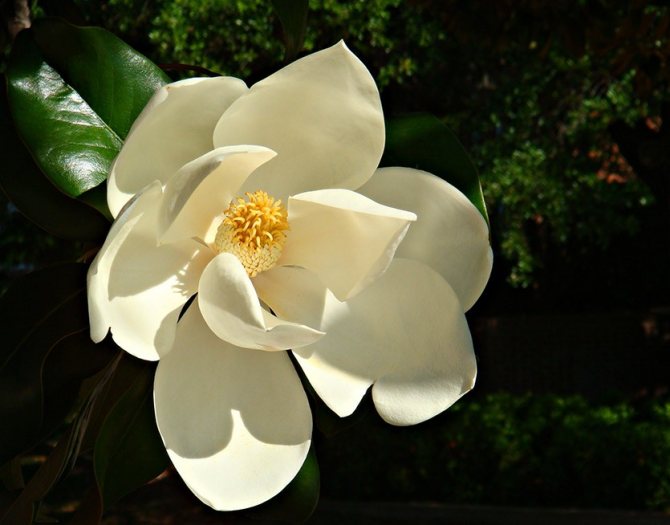

CameliaTWU /
For grandiflora, a mixture of peat, sand and compost or sapropel (river, lake silt) is prepared in a ratio of 2: 2: 3. When grown from seeds, after collection (from October to January), they must be immediately freed from red sarcotesta and laid for 2-4 months for stratification. To do this, half pour a mixture of raw sand and moss into the jar, mix with the seeds, close the lid and refrigerate at a temperature of + 1 + 5 ° С. Check seeds weekly for mold and stir. In February, seeds should germinate even in the refrigerator. If you miss the moment, then the young root will rot. In mid-February, the seeds are sown in the soil mixture to a depth of 1 cm. The place for the seed box is chosen in light partial shade with a temperature of + 20 + 25 ° C. All seeds will sprout within a month. The soil needs to be watered as the top layer dries. After 3 months, the seedlings are planted in separate containers with maximum accuracy - magnolias do not like damage to the roots, which leads to a long stress period or infection of the root system with fungal diseases and the death of the seedling. Rooted seedlings are exposed to good lighting and watered regularly. Tempering a seedling outdoors in summer, and in winter on a balcony or an unheated greenhouse (without freezing the pot), it can be planted in open ground when it reaches 0.5 m in height (moreover, the larger the plant, the better it will endure the first winter in the open ground ). Like most magnolias, grandiflora also propagates by cuttings and cuttings.
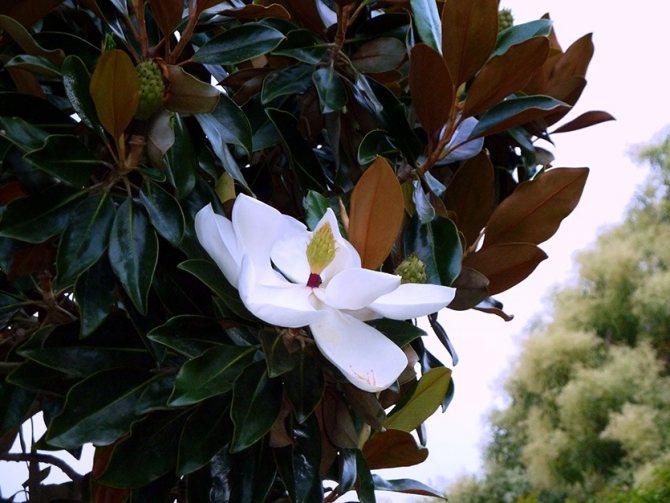

fresnel_chick /
A grown or purchased (only contained) grandiflora seedling should be planted in the garden in the warmest and brightest place, where there is no wind at a height of up to 2 m. In addition to the house on the north side, seedlings and, preferably, other buildings from the east or west, the bushes of yew, boxwood, juniper, holly, mahonia, thuja "Nana", spruce "Konika" and other evergreen winter-hardy low-growing plants will become good wind and frost protection. In the Middle Lane, winter wind is the main enemy for grandiflora. The planting pit should be at least 0.6 × 0.6 m deep and wide, and when planting large-sized ones, the dimensions of the pit should be 3 times the volume of the container. A soil mixture (peat, sand, compost) is poured into the pit, you can add rotten wood from the forest, which will introduce mycorrhiza and acidify the soil even better. And if the local soils are sandy, then 5% loam can be added to the mixture. Mix everything and spill well with water.It is better to prepare the planting hole in March - April, so that by mid-May, when it will be necessary to plant magnolia, the soil is already well settled.
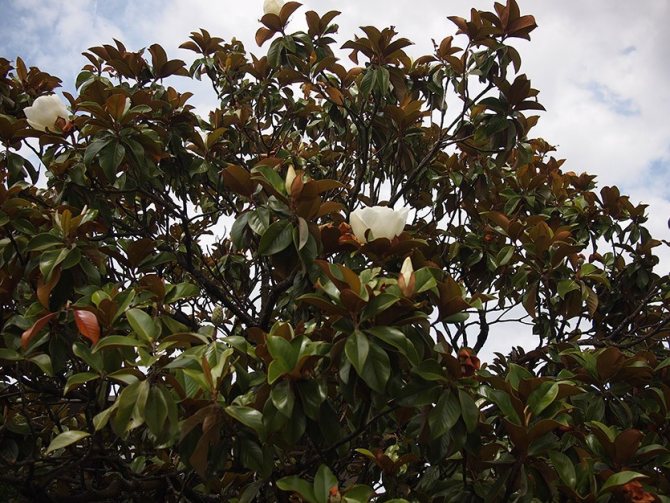

Kirill Ignatyev /
Grandiflora is planted outdoors after spring frosts until mid-July. In the first month with daily moderate watering (drying out of the soil is detrimental to grandiflora). The rooted plant is watered 2-3 times a week, in the heat it is necessary to sprinkle the foliage (prevention of spider mites). To reduce evaporation, cover the trunk circle with straw, pine or oak bark, sawdust. No additional feeding is required in the first year. In subsequent years, fertilization of magnolia is carried out 3-4 times from May to mid-July with peat, humus, grass compost, lake silt (limestone and ash are contraindicated).
All shoots that have finished their growth by August successfully overwinter, the rest usually freeze and can cause a fungal infection of the plant. Therefore, it is necessary to prune all non-lignified shoots at the beginning of October. Sanitary pruning of grandiflora is carried out in March - April before the beginning of the growing season (before the buds dissolve). In winter, when the temperature in the evening drops to -15 ° C, the whole plant should be wrapped in burlap and agrofibre. In this case, the trunk circle should be well covered with straw and covered with snow.
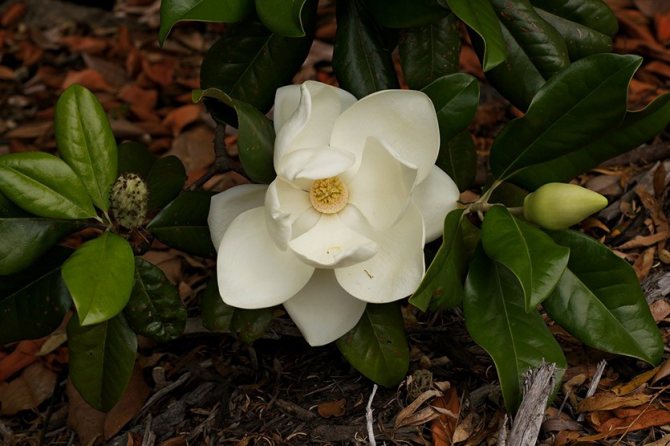

Tatters /
To prevent mice from getting in the straw, experienced gardeners recommend mulching after the top layer of the earth is grabbed by the late autumn morning frost. But 3-4 cats help the best from mice. But mulching with hay is even better, because it cakes better, damp and rotten in winter, giving out a lot of heat to the roots. There are many earthworms there, which improve soil fertility and drainage. But it also attracts moles, which can pluck the roots of magnolia.
The rest of the immunity of magnolias is excellent - they practically do not get sick, and they do not have pests. Only damage to the bark and roots, high pH and stagnant water can lead to fungal verticillosis (leaves turn yellow, petals turn brown). It can be defeated by fungicides (for example, 1 g of foundationazol per 1 liter of water).
If the magnolia of Soulange is the queen of the garden, then the grandiflora is the empress. There is not a single person whom she would leave indifferent. Therefore, if you want tropical exoticism with huge flowers that attract the whole environment - from a bee to the chairman of a dacha cooperative, plant a large-flowered magnolia.

